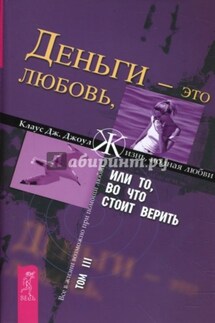The General Theory of Capital: Self-Reproduction of Humans Through Increasing Meanings - страница 56
By abstracting from specific kinds of labor, we do not create a new kind of labor. Abstract labor and its products do not exist in themselves; they are found in concrete labor processes and their products. But if concrete labor creates use values and commodities, then abstract labor creates exchange values and money. As we have shown, use value is not an individual utility but a socially necessary set of existence values. Use value is, so to speak, a prologue to a commodity in demand on the market and its exchange value. For a commodity to have an exchange value it should have a use value, that is, satisfy socially necessary needs. Commodities are wealth because they accumulate both use and exchange values.
We will distinguish between the multiplicity and the mass of meanings. The multiplicity of meanings consists of a set of meanings. In terms of commodities, these could be: two rolls of cloth, three bulls, ten tons of steel, etc. The mass of meanings is the set of cultural bits contained in a given multiplicity of meanings. Concrete labor creates commodities, abstract labor defines their mass. As Marx said, the abstract labor that forms the substance of value is homogeneous labor. However, since at the time of Marx there was neither information theory nor the concept of the bit, he had to measure abstract labor in terms of labor time:
“A use value, or useful article, therefore, has value only because human labor in the abstract has been embodied or materialized in it. How, then, is the magnitude of this value to be measured? Plainly, by the quantity of the value-creating substance, the labor, contained in the article. The quantity of labor, however, is measured by its duration, and labor time in its turn finds its standard in weeks, days, and hours” (Marx and Engels 1975-2004, vol. 35, pp. 48-9).
Marx measured the exchange value of a product by the amount of labor that was socially necessary to produce it, and he measured the amount of labor by its duration: “The labor time socially necessary is that required to produce an article under the normal conditions of production, and with the average degree of skill and intensity prevalent at the time” (Marx and Engels 1975-2004, vol. 35, p. 49). Since it is obvious that more complex labor creates more value than simpler labor of the same duration, he reduced complex labor to simple labor by applying a multiplier:
“Skilled labor counts only as simple labor intensified, or rather, as multiplied simple labor, a given quantity of skilled being considered equal to a greater quantity of simple labor. Experience shows that this reduction is constantly being made. A commodity may be the product of the most skilled labor, but its value, by equating it to the product of simple unskilled labor, represents a definite quantity of the latter labor alone” (Marx and Engels 1975-2004, vol. 35, p. 54).
Marx did not know, and could not have known, that there is no multiplier that can reduce a more complex meaning to a simpler one. Only later in the 20th century was it shown by information theorists that there is no such algorithm that could eliminate “redundant” figurae and compress the meaning s to the minimal action s* to find out the complexity of s:
“The difference between the length of a string L(s) and its algorithmic entropy







